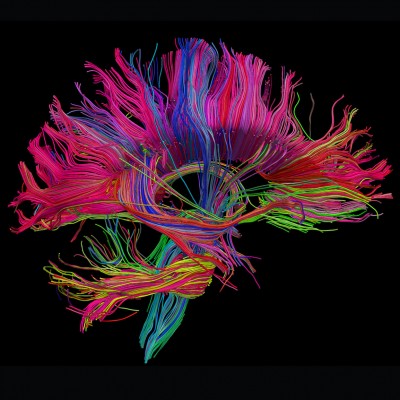Neuroimaging, Movie Trailers, and Spectator Cognition
Co-Directors
- Tianming Liu, Associate Professor, Department of Computer Science
- L. Stephen Miller, Professor, Department of Psychology and Director Bioimaging Research Center
- Richard Neupert, Charles H. Wheatley Professor of the Arts and Josiah Meigs Distinguished Teaching Professor, Department of Theatre and Film Studies
Description
One of the most stunning developments in the human sciences is the ability to map the brain in real time and apply advances in computational modeling to diagram and study the brain’s functions. Recently, the dynamic new field of Neurocinematics brings together the fields of brain science, Psychology, computer imaging, and cinema studies to examine how people perceive and process recorded images and sounds. Pilot studies at UGA have shown that fMRI neuroimaging can effectively probe and monitor functional responses of the brain and quantify and illustrate those findings. The Neuroimaging Research Cluster is dedicated to learning more about how humans see colors, perceive editing rhythms, and process music and sound effects, and whether a correlation between popular and unpopular visual and audio stimuli can be calculated. Since motion picture trailers provide concise, concentrated samples of sounds, images, and story actions, the research objective of Neuroimaging, Movie Trailers, and Spectator Cognition is to investigate the degree to which neuroimaging can demonstrate correlations between brain activity and spectator responses to visual and audio stimuli in a sample of mainstream movie trailers. The cluster will document the cinematic strategies of select trailers and the resulting brain responses in subjects within the fMRI machine in the UGA Bio-Imaging Research Center.
In the near term, the cluster will provide specific evidence for which aspects of these movie trailers appeal to audiences most directly, grabbing and holding their attention and even generating pleasure. The end goal is to provide insight into cinematic spectatorship and reception, and understand some of the factors behind how fans on many internet sites rate these trailers as positive or negative. Ultimately, the research cluster has the potential to apply cutting edge neuroimaging and computational modeling techniques in order to discover the neural mechanisms for comprehending the visual arts. It may even lead to further research in areas beyond cinema, including television and new media, but also painting, photography, conceptual art, sculpture, calligraphy, and printmaking. This research could potentially influence commercial film and new media production as well as motivate new marketing studies and trends.
Affiliates
- Bio-Imaging Research Center
- Department of Computer Science
- Department of Psychology
- Department of Theatre and Film Studies

